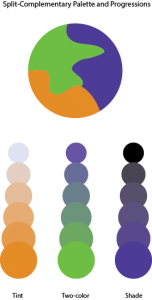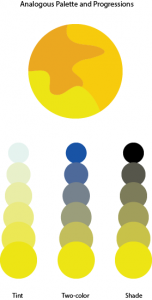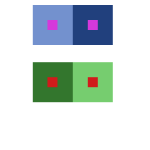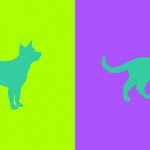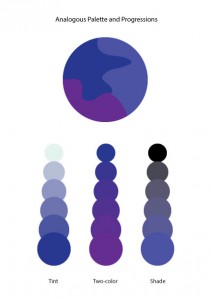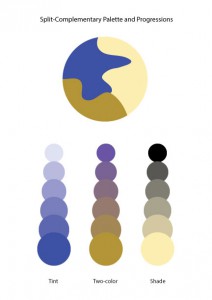In this lab, I complete an analogous palette and a split-complementary palette. I learned an analogous palette is colors that are adjacent to each other on the color wheel. I also learned that a split-complementary is one base color with the two colors directly adjacent to its complementary color.
